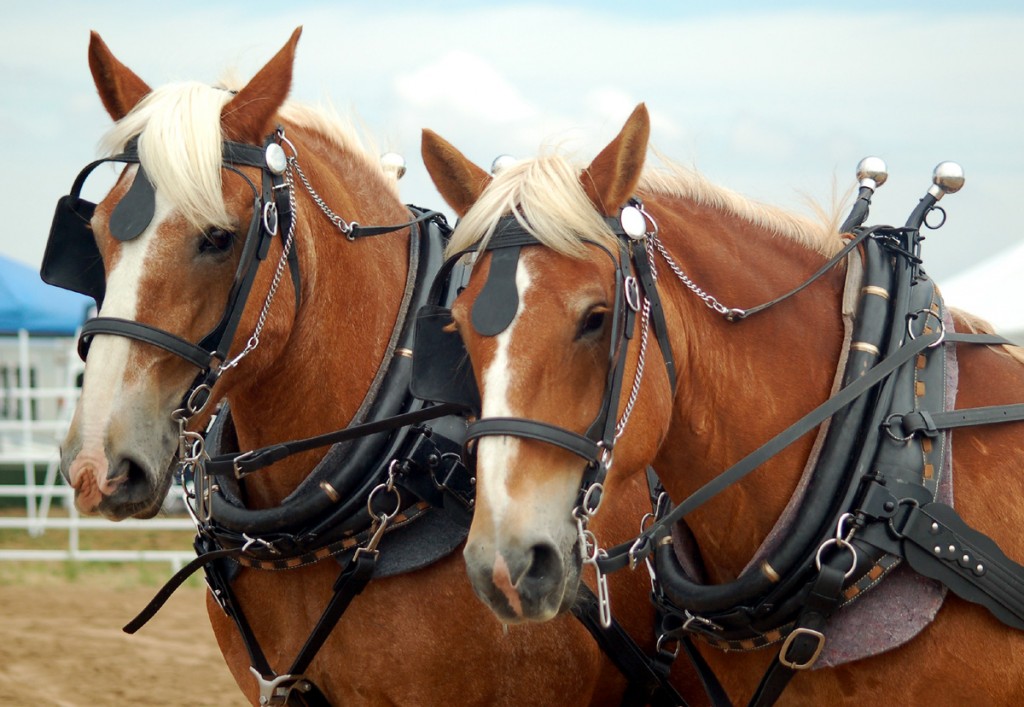 Bonnie and Belle were draft horses on my grandparents’ farm in Michigan. As a small child in the 50’s it was a great thrill to sit on them as they munched hay in the barn. They were very large, and my cousin and I probably felt like flies on their backs. They hardly seemed to notice.
Bonnie and Belle were draft horses on my grandparents’ farm in Michigan. As a small child in the 50’s it was a great thrill to sit on them as they munched hay in the barn. They were very large, and my cousin and I probably felt like flies on their backs. They hardly seemed to notice.
Though I was too young to be very discerning, I never saw anything that felt like abuse or neglect involving these stately beautiful creatures, but they were clearly not pets; they worked on the farm, pulling plows and wagons and whatever was needed to plant or harvest crops.
These years were a time of transition to mechanized farming, and Bonnie and Belle started doing less work as the tractor was used more often. My grandfather followed them with a small plow in the garden behind the farmhouse, but they were slipping into retirement as I reached my pre-teen years. And then they were gone. Sold to someone, and I never knew the details. I’m sure such sales were happening all over rural America as the tractor took over, and the use of draft horses plummeted.
In the urban environments, horses became superfluous also. In the late 19th century, every item shipped by rail needed to be collected and distributed by horses at both ends of the journey. In the 1820’s horses overtook travel by foot as the most used means of transportation in urban areas. This required tremendous numbers of horses and the horse population skyrocketed. Then in the 1890’s, the automobile became the rage and took over as the primary means of getting around the city.
The large numbers of horses used in wars, as recent as World War I, required the production of large numbers of horses. Between 1914 and 1917, about 1,000 horses were sent every day by the ship from the United States to Europe to “work” as soldiers.
World War II was the first highly mechanized war, and though large numbers of horses and mules were used as cavalry, field artillery draft animals and in supply trains, by the end of the war, mechanization eliminated much of the need for horses and mules.
The decline in the “usefulness” of horses in the United States, and in much of the rest of the world has left them with the purpose of fulfilling human’s needs for making money (horse racing) or recreation, which can include pretty serious competitions. They are not “necessary” to keep the economy afloat.
Indiscriminate breeding has lead to too many horses and too many with physical or behavioral faults that render them unsuitable for domestic use. The cost of ownership has doubled or even tripled, while the resale value has been reduced to less than half.
Though perhaps the standards of horse care have improved over the years, with more focus on humane treatment of animals in general, horses are still in peril. There are too many “unwanted horses” and not enough places for them to receive the care they deserve. Slaughter and euthanasia are not acceptable solutions. What can we do? I wish I knew the answer.